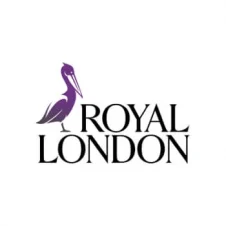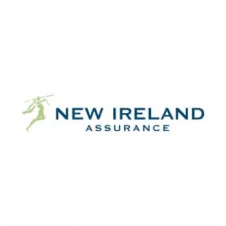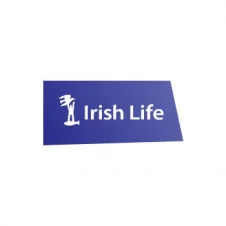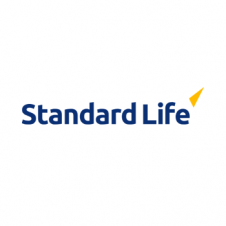
Which is Best Mortgage Protection Life Insurance Policy in Ireland
Which is the best mortgage protection policy, available in Ireland? Knowing how to choose the right provider policy to suit your specific needs, as well
Expert Guidance
Edward J. Steiglitz
Our life insurance advice extends to personal, family, and business.
Protecting Family First
Term Life Insurance offers the most flexible and best value option for your family protection needs. As the most popular type of life insurance, it allows fixed premiums or inflation protection premiums and benefits.
It pays out a tax-free lump in the event of death, but can also include optional serious illness cover, with claim pay outs made to spouses or civil partners, completely tax-free.
You’ll pay a regular, fixed premium based on your chosen sum assured, and policy term, which is then dictated by your age, smoking, and health status.
You can also choose to include both partners on the same policy, but have different or the same cover levels on each person as best suits your families circumstances.

Protecting Family First
When it comes to protecting your family, Term Life Insurance offers the most flexible and best value option.
Term Life Insurance pays out a tax-free lump in the event of death, but can also include optional serious illness cover, with claim pay outs made to spouses or civil partners, completely tax-free.
You’ll pay a regular, fixed premium based on your chosen cover level, and policy term, which is then dictated by your age, smoking, and health status.
We compare and discount the market to guarantee the best and most suited coverage at the lowest price.
You can also choose to include both partners on the same policy, but have different or the same cover levels and also have the option to include inflation protection.
Life Insurance Advice
Our expert life insurance advice, includes protecting you and your family,
against the financial impact of death or serious illness, but also protecting your income,
from work preventing, accident, illness, or disability.
Designed to clear your mortgage on death, your cover decreases as your outstanding mortgage decreases. Including Serious Illness Coverage, or adding a Conversion Option are entirely optional, so you can tailor the policy to suit you.
Term Life Insurance covers you for a chosen, length of time and pays a lump sum, if you die during that term. Many people opt for a higher level of cover up to their expected retirement age, and then convert it to a lower level cover into to old age.
This hugely important protection will pay you a lump sum if you are diagnosed with one of up to 100 illnesses covered on your plan. These include cardiac, cancer, stroke and MS, where the majority of claims occur, with free claims assistance.
Replaces up to 75% of your earned income if you are unable to work due to any illness or injury while employed. Cover can be set to your retirement age, with up to 40% premium tax-relief applying on personal income protection policies.
Life Cover Guidance
Life insurance can be used to protect your business, against loss of profits, and shareholder control, as well as to cover capital investments, business loans and personal income. Specialist life insurance for estate planning purposes, is also described below.
Key Person Insurance sometimes called Key-man Insurance, can protect your business should a key employee die or become seriously ill. The company pays the premiums and it can be arranged to cover loss of profits or business loans.
This cover exists specifically to protect business shareholders and their families. It is designed to allow the remaining shareholders or business partners buy back shares in the event of the premature death or serious illness of another shareholder.
Estate planning involves passing on your estate in the most tax efficient manner, through the use of “Section 72 whole of life assurance”, to cover the inheritance tax liabilities of your beneficiaries. We provide free quotes, with full market comparison.
Executive Income Protection allows for company paid premiums, meaning that not only payment through taxed income is avoided, but it can also be included as a business expense. Cover and go up as far as age 70, with up to 75% of your income covered.
Extensive Reach
We compare and discount all the leading life insurance firms operating within in the Republic of Ireland, to
include: Irish Life, New Ireland, Zurich, Aviva and Royal London Ireland.






testimonials
Our protection client feedback through Google reviews.
news & posts
Benefit from our latest life insurance articles.

Which is the best mortgage protection policy, available in Ireland? Knowing how to choose the right provider policy to suit your specific needs, as well

You have landed on this blog as you’re seeking the cheapest mortgage protection insurance available in Ireland. Well, stick around because you have arrived in

Which is the best mortgage protection policy, available in Ireland? Knowing how to choose the right provider policy to suit your specific needs, as well

You have landed on this blog as you’re seeking the cheapest mortgage protection insurance available in Ireland. Well, stick around because you have arrived in

Flexible, future-proofed Mortgage Protection insurance is important because as your future circumstances change so too will your Mortgage Loan requirements, meaning you will have to
Questions & Answers
Your life insurance questions answered.
The are main types of life insurance for individual and family protection purposes, paying a tax-free lump sum on death are:
Term Life Insurance
Term Life Insurance is much cheaper than whole of life insurance and its important to understand that Life insurance is not just about covering funeral costs, but much more about protecting your dependants against financial stress caused by the loss of your income.
We recommend a higher level of cover up to retirement age and then reducing your cover down in old age, and to allow this level of flexibility to include a “conversion option” in your quote.
Life insurance benefit is paid out as a tax-free lump sum.
Joint and Dual life policies are paid directly to the second life assured and are always tax-free, as they don’t form part of your estate.
Your spouse will not have to pay tax on the life insurance pay-out, but if its a single life policy, it will go to your estate first, before being later paid out to your spouse.
All benefits passing between married couples and civil partners are exempt from Inheritance Tax.
However, anyone else who inherits the money after your death, depending on their relationship to you, may have to pay inheritance tax. How much tax they pay depends on how much they inherit and Revenue rules at the time of your death.
If you arrange a policy on your own life only, the benefit is paid directly to your estate and distributed in accordance with your will. Alternatively, you can arrange the policy in trust for payment to whoever you have named as the beneficiary, once the insurer has received proof of your death.
If your spouse or partner takes out a policy on your life, the benefit could be paid to them without going to your estate. If you have a 2 person policy the benefit is usually paid directly to the surviving policyholder named on the policy.
For family protection purposes, the lump sum provided by your policy should be ideally invested to provide an income over a set time frame. For example, based on current interest rates €450,000 life cover would provide an income replacement of circa €30,000 for 20 years.
On average, your total amount of life cover should equate to 2/3rd of net annual income multiplied by your number of years to retirement. Include a continuation option to review and extend cover beyond this.
Joint cover means the policy will only pay-out one time only on the first to claim of the 2-people covered.
Dual cover will pay out again if a subsequent claim occurs during the policy term.
Joint cover is more suited to mortgage loan cover and dual cover for family protection. Dual cover also allows for different levels of cover on each person as required, so in effect offers better and more flexible cover, at very little extra cost.
For a small additional cost, a continuation option is a very valuable benefit that allows you to extend your cover under a new policy. You can use this option at any stage throughout your policy term, without having to provide any fresh evidence of health.
Should you choose to add serious illness cover to your life insurance policy you will also be covered for a tax-free lump sum payment in the event of a serious illness claim on one of up to 91 specified serious illnesses. Your policy quote will be on a “life & accelerated serious illness cover” basis meaning that a serious illness claim payout acts as an advance payment of your chosen life cover amount.
Yes, we quote only guaranteed premiums without reviews. If you choose to inflation protect your cover (3% per annum) by including indexation, the cost will also increase at an average rate of 4% per annum dependent on the insurer.
Typically there is no need to do a medical. However, if you are seeking a very high level of cover for your age, or for applicants with a serious ongoing medical condition, a medical exam may be needed. If this is a concern, it’s best to be upfront and give us a call and we will quickly be able to tell you, what extra medical information will be sought.
It depends on the condition, how serious it is, and how progressive it is! The underwriters will seek specific information from you and sometimes your GP or consultant, before confirming its effect if any!
Your life insurance quote will remain fixed until your next birthday occurs. Once your life insurance policy starts your premium remains fixed unless you increase your cover level.
Life insurance is mainly used to describe policies that specify a set term. If you don’t die within the specified time period, then a claim can’t be made.
Life assurance is ‘whole of life cover’, which means that a payout is guaranteed after your death at any stage in your life.
This may change in the future, but in 2023, if you’re seeking a combination of the best policy and price, then its undoubtably Royal London Ireland.
Included as standard for are: Guaranteed Insurability, Advance Life Cover, Children’s Cover and Terminal Illness, but also:
Some of the ways in which Helping Hand could benefit you:
Royal London Ireland is owned by The Royal London Mutual Insurance Society Limited – the largest mutual life insurer in the UK and in Ireland in 2021 they paid put over 43 million in Claims.
However, if you’re prepared to pay 20% more, especially for a free digital GP service for you and your family, then Aviva is the choice. Their health and counselling services include:
Digital GP Visits, Mental Health Support, Best Doctors – Second Medical Opinion and Bereavement counselling as standard.
If all unpaid premiums due on your policy are paid by you or by a third party on your behalf, within 100 days of the date your first unpaid premium was due, your policy will be reinstated without a requirement to submit a Declaration of Health.
You cannot however just pause and take back up life insurance when you like because your health may change and your own a fixed price related to you health at policy inception.
If you no longer need life cover or cannot afford to pay the premiums, you can reduce down your cover to make it more affordable or you can cancel your policy at any time without penalty payment.
There are 4 main types of life insurance for business protection purposes:
Get in touch
Schedule your free consultation now.
OneQuote Financial Brokers,
11 James’s Terrace, Malahide,
Co. Dublin, K36 CV08
One Quote Financial Brokers is regulated by the Central Bank of Ireland no: 459006.
©2023 All Rights Reserved.
Web Design by Juvo.